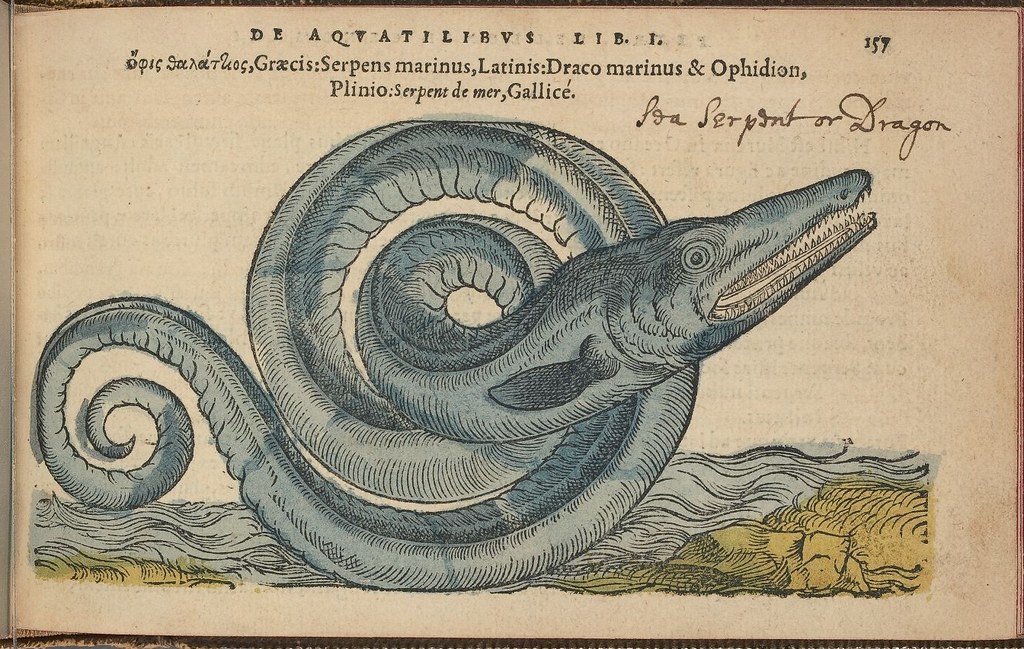
An island-nation, strongly dependent on the sea for survival, sea serpents and other monsters of the deep are ingrained into the British mythological imagination.
Nowhere is this clearer than looking out over the Great Orme in North Wales. Known in Welsh as Y Gogarth, it is a narrow headland that stretches out to sea, nestling up to the town of Llandudno. Does its winding shape remind you of anything? Looking out to sea, the ancients saw a serpent rearing up from the water.
The name ‘Orme’ comes from the Old Norse meaning ‘Worm’, a common archaic name for serpents or snakes (also often spelt as ‘werm’). Therefore in its English variant the headland translates as the ‘Great Serpent’. In Welsh, ‘Y Gogarth’ simply means ‘The Greatness’ implying a sense of awe, fear or perhaps even worship from those that named it.
You can see how the Orme seems so unlike the flatter land where Llandudno is built, truly seeming to rise up out of the sea like a monster. A constant reminder to the sea-faring folk of the coastline of the sea’s might and power.
Nearby is the smaller headland, commonly called the ‘Little Orme’ and known by various names in Welsh, my favourite being Trwyn y Gogarth, roughly translating as ‘nose of the greatness’ or perhaps ‘nose of the serpent’. The ancient Welsh people clearly saw thse landmasses as being connected, part of the same creature circling their coastline.

Sea-serpents remain an enigma today, with myths such as the (freshwater) Loch Ness monster remaining unsubstantiated despite numerous investigations.
One contemporary explanation for such accounts attributes them to Giant Squids (Architeuthis), which occasionally pass through the waters of regions where most accounts of sea serpents have come from: Scandinavia, the British Isles and North America. Their long bodies are bendable and can protrude from the water when the squids near the surface. Perhaps this is what sailors who reported sea werms saw emerging from the deep?
Indeed, it’s fitting that the word ‘Orme’ comes itself from Scandinavia, as tales of sea serpents are especially prevalant in Norse mythology. Perhaps these tales are an ‘import’ into the British imagination via Viking conquerors.
In Norse mythology, Jörmungandr is a huge and monstrous sea serpent, born of a giantess and the God Loki, and thrown into the sea by Odin. Jörmungandr is the serpent depicted in the common image of the snake eating its own tail, a Norse Ouroboros. You can see the word ‘Orme’ contained within its name, whilst the surrounding syllables add the meaning of ‘huge’ or ‘massive’.

Whatever their origin, I personally think sea-serpents are an under-utilised trope in fantasy literature. We have so many dragons but I can’t think of a single story where sea-serpents feature in the same iconic way.
Do you know of any fantasy novels with sea serpents I’ve missed out on?
I’m intending to remedy this in my own fantasy novel. If you’re interested, you can read more about it in the ‘Fantasy Writing’ section of my blog.


I wrote a novel that contains a water serpent monster. It is “Looking for opOgopogo” on Amazon kindle.
LikeLike